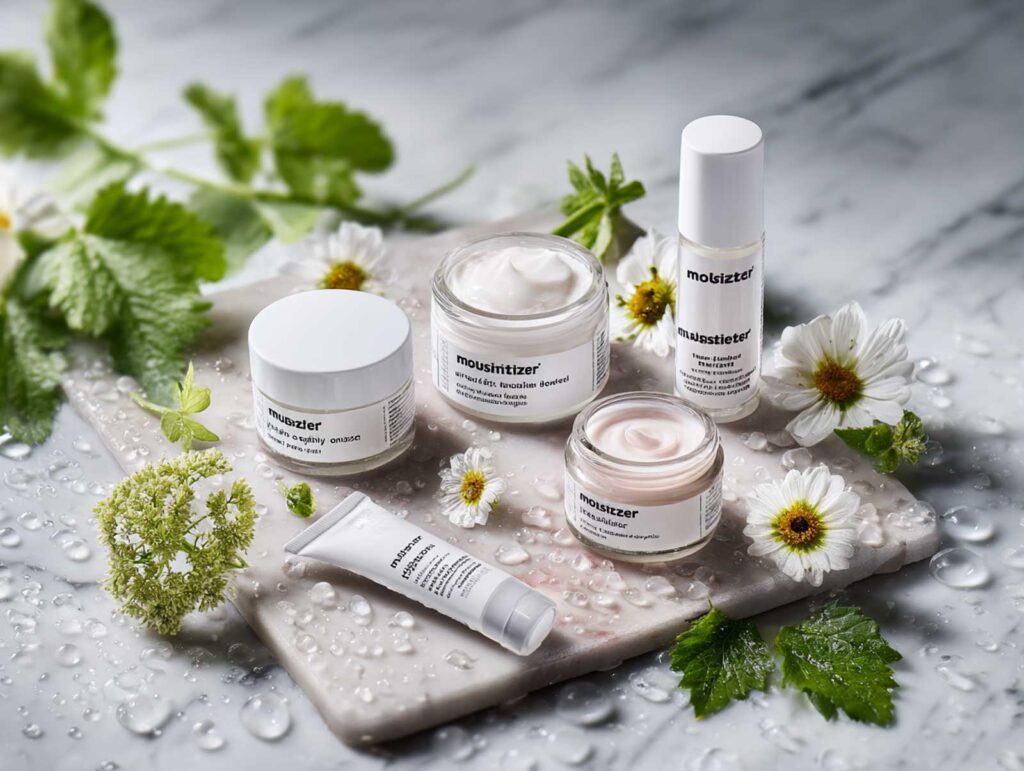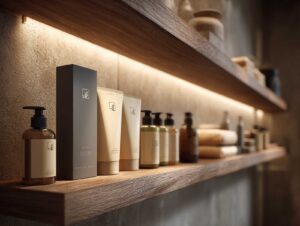Skincare
Hydration Heroes: The Role of Moisturizers in Skin Health
There’s nothing glamorous about dry skin. Flaky patches, a dull sheen, or that tight, uncomfortable feeling – these are all signs your skin’s protective barrier is begging for support. And that support often comes in the form of the most underrated staple in skincare: moisturizers.
While serums and masks might steal the spotlight, moisturizers are the quiet heroes working day and night to protect, hydrate, and heal your skin. They aren’t just about looking good – they’re about keeping your skin functional, balanced, and resilient. Whether you’re oily, dry, combination, or sensitive, moisturizing is non-negotiable.
Let’s unpack what makes moisturizers so essential, how they work, and how to choose the right one for your skin type.
Why Moisture Matters
Your skin’s primary job is to act as a barrier. It protects you from pollution, microbes, UV damage, and moisture loss. But that barrier can only function properly if the skin itself is hydrated and nourished.
When the skin is dehydrated, it becomes vulnerable. Cracks can form, irritation increases, and inflammatory skin conditions like eczema or acne are more likely to flare. Even mild dehydration reduces elasticity and accelerates visible aging.
Here’s the real kicker: you lose water from your skin every single day through a process called transepidermal water loss (TEWL). The environment – especially wind, cold, sun, and dry indoor heat – can accelerate that loss. So, unless you actively replenish and seal in moisture, your skin will struggle to stay healthy. Moisturizers help plug this gap.

Breaking Down the Moisturizer Molecule
Not all moisturizers are created equal. In fact, “moisturizer” is a catch-all term for any formulation that includes some combination of three key ingredient types: humectants, emollients, and occlusives.
Humectants are water-lovers. They pull moisture from the environment or from deeper skin layers to hydrate the surface. Think hyaluronic acid, glycerin, aloe vera, and urea. These are your hydration magnets.
Emollients are the smoothers. They fill in the gaps between skin cells with lipids, softening the skin and improving texture. Squalane, shea butter, ceramides, and fatty alcohols fall into this category.
Occlusives form a protective barrier. These heavier ingredients sit on top of the skin to prevent water from evaporating. Petrolatum, beeswax, lanolin, and mineral oil are common examples.
An effective moisturizer doesn’t just contain one type – it carefully balances all three. That balance varies depending on the skin type it’s formulated for.
Matching Moisturizers to Skin Types
People often think oily skin doesn’t need moisture. That’s a myth – and a damaging one.
Oily skin can still be dehydrated. In fact, when it’s stripped of moisture (often by harsh cleansers or over-exfoliation), it tends to produce even more oil to compensate. That creates a vicious cycle. A lightweight, non-comedogenic moisturizer with humectants and light emollients can help rebalance oily skin without clogging pores.
Dry skin, on the other hand, needs heavier moisturizers rich in occlusives and emollients. These not only hydrate but also form a seal to prevent further water loss. Thick creams or balms are often best here, especially during colder months.
Combination skin can benefit from layering – using a lightweight moisturizer in oily areas and a richer cream on dry patches. Or opt for a well-balanced moisturizer that provides hydration without excess heaviness.
Sensitive skin? This calls for formulas free from common irritants like fragrance, alcohol, or harsh preservatives. Moisturizers with ceramides, colloidal oatmeal, or panthenol can soothe and repair the skin’s barrier.
Moisturizers for Every Age
As we age, our skin produces less oil, holds less water, and loses elasticity. Fine lines appear, the surface becomes rougher, and everything just looks…less plump.
Moisturizers help slow that progression.
For younger skin, especially in your teens and twenties, a gel or lotion with humectants may be enough. But by your thirties and beyond, adding emollients and barrier-repair ingredients becomes important.
Over time, regular use of a moisturizer can improve the appearance of fine lines and enhance the skin’s ability to retain water. In one clinical study, consistent moisturizer use increased skin hydration by over 50% within four weeks (source: National Library of Medicine – https://www.ncbi.nlm.nih.gov/pmc/articles/PMC5849435/).
Moisturizers and Skin Conditions
Dryness isn’t just a cosmetic concern – it can be a medical one. Skin conditions like eczema, rosacea, and psoriasis all have one thing in common: a compromised skin barrier. Moisturizers can help repair that barrier and reduce flare-ups.
In eczema, using a thick, occlusive moisturizer immediately after bathing helps trap water and reduce inflammation. The National Eczema Association emphasizes that regular moisturizing – multiple times per day – is one of the most effective non-prescription strategies for managing symptoms.
In rosacea, moisturizers reduce irritation and help the skin tolerate active treatments like azelaic acid or metronidazole. And in psoriasis, moisturizers soften plaques and improve the penetration of medicated creams.
Even acne-prone skin benefits from moisturization. Harsh acne treatments often dry the skin out, making it flaky, red, and more irritated. A non-comedogenic, oil-free moisturizer with soothing ingredients can reduce this side effect and actually make treatments more tolerable.
Barrier Repair: More Than Skin Deep
Think of your skin barrier like a brick wall. The skin cells are the bricks, and the natural lipids – ceramides, cholesterol, and fatty acids – are the mortar. When the mortar breaks down, the wall weakens.
Moisturizers help rebuild this structure.
Ceramide-containing moisturizers in particular are powerful for long-term barrier repair. Studies show that moisturizers enriched with ceramides can significantly improve hydration and reduce TEWL over time. Some even mimic the natural lipid balance found in healthy skin.
A strong barrier means fewer irritants get in – and less water gets out. That translates to calmer, more resilient skin.

Timing Matters: When and How to Moisturize
Moisturizer works best when applied to slightly damp skin. After cleansing, pat your face dry gently, then apply your moisturizer within 60 seconds. This traps existing moisture and helps active ingredients penetrate more effectively.
How often should you moisturize? For most people, twice a day is ideal – once in the morning and once at night. But if your skin is particularly dry or compromised, more frequent applications may be needed.
Layering matters too. After serums or actives, follow with moisturizer to lock everything in. And in the morning, finish with sunscreen – even if your moisturizer has SPF.
Seasonal Shifts and Moisturizer Swaps
Your moisturizer needs can change with the weather.
In winter, indoor heating and dry outdoor air strip skin of moisture, so richer creams are often necessary. In summer, lighter gels or lotions may suffice, especially if humidity levels are high.
Travel can also affect skin hydration. Airplane cabins, for instance, have humidity levels below 20%. That’s drier than the Sahara Desert. Applying a moisturizer pre-flight – and reapplying mid-air – can help prevent the post-travel skin slump.
Ingredients to Look For (and Those to Avoid)
Some of the best ingredients in moisturizers include:
- Hyaluronic Acid: Holds up to 1,000 times its weight in water.
- Glycerin: A gentle, effective humectant found in many formulas.
- Squalane: Mimics the skin’s natural oils and absorbs quickly.
- Ceramides: Essential lipids that restore barrier function.
- Panthenol (Vitamin B5): Calms and hydrates.
- Niacinamide: Boosts skin barrier and reduces redness.
What to avoid? Fragrances, essential oils, alcohol, and certain preservatives can all irritate sensitive or compromised skin. Always patch test if you’re trying a new formula, especially if you have a history of reactions.
The Myth of “Drinking More Water”
There’s a popular belief that drinking eight glasses of water a day will solve your skin problems. Hydration is important – but topical moisture is what your skin actually craves.
Drinking water benefits your body’s overall function, but skin hydration depends more directly on your skin barrier and the products you apply. That’s why even people who are well-hydrated internally can suffer from dry, flaky skin if they’re not using the right moisturizer.
FAQ
Should I still moisturize if I have oily skin?
Yes. Moisturizing helps balance oil production. Look for lightweight, non-comedogenic formulas that hydrate without clogging pores.
What’s the best time to apply moisturizer?
Right after cleansing, when your skin is still slightly damp. Morning and night are both key times for moisturizing.
Can I use body lotion on my face?
Generally, no. Body lotions are thicker and may contain fragrances or ingredients not suited for facial skin, which is more delicate.
Is one moisturizer enough year-round?
Not always. You might need a lighter formula in summer and a richer one in winter. Listen to your skin – it will tell you.
How long does it take to see results?
Many people notice a difference in hydration and texture within a few days. Long-term barrier repair and anti-aging benefits may take several weeks.
Why Moisturizers Are Worth the Investment
Your skin doesn’t just need moisture – it depends on it. From barrier repair and elasticity to comfort and appearance, moisturizers serve multiple vital functions. They’re not just a “nice-to-have.” They’re a daily essential.
A well-formulated moisturizer acts like armor and therapy in one. It protects, restores, and maintains skin health across all ages, conditions, and environments.
So, if you’re building a skincare routine, or just trying to figure out why your skin feels off lately, start with the basics. Start with moisture. It might be the quietest step in your regimen, but it’s often the most important.





